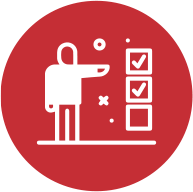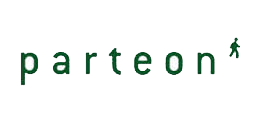Software Robot Assessment
Ensure you can truly rely on your software robots.
“Software robots are never sick and don’t go on vacation.” At least, that’s what you were told when you started deploying RPA. However, sometimes the software robots fail to perform. This is particularly concerning when critical processes have been automated, and the business has become reliant on the software robots.
Introducing the solution: the Software Robot Assessment
Despite the promise of effortless automation with UiPath, we understand that building software robots is more complex than anticipated. In practice, we often see a lack of adherence to development standards, resulting in unstable and difficult-to-manage software robots. With our Software Robot Assessment service, we assess the quality of your robots and assist you in making them stable, secure, and manageable.
We have Senior RPA Developers with over 5 years of experience ready to scrutinize your software robots. Our aim is to prevent unexpected downtime and restore employee confidence in RPA.
What are the challenges with software robots?
Issues in the performance of software robots can be a stumbling block for further application of RPA in the organization. Challenges that we often encounter in practice include:
- Process changes: Constant process changes require adjustments to the software robots to remain relevant and effective.
- Application changes: Updates or modifications to the applications used can disrupt the operation of the software robots.
- Improper handling of Business Rule Exceptions and System Exceptions: Incorrect processing of exceptions can lead to software robots getting stuck and disrupting other processes.
- Incomplete or incorrect logging: Inadequate or inaccurate logging makes it difficult to identify and resolve incidents.
- Availability of RPA Developers: Illness, vacations, or turnover of RPA Developers jeopardize the continuity of the robots.
- Manageability: Lack of proper documentation and adherence to development standards complicates the management and maintenance of software robots.
The Evolution of RPA:
from User Interface to API’s
Analyst firms like Gartner and Forrester are increasingly advocating for an API-first approach when it comes to automation. RPA has become particularly popular for its ability to automate processes via the UI of existing applications. We observe that many legacy software robots do not yet leverage integration capabilities. This makes the Robot Assessment even more relevant: assessing which integration options are available to make robots more robust and efficient.
UiPath has also been active in this area. Think of new UiPath Studio activities, snippets, connectors, and solutions in the UiPath Marketplace. But also consider the introduction of UiPath Integration Service, a true game-changer for managing and implementing APIs in robots.
Whether it’s AFAS Connectors, SAP BAPIs, or SharePoint: we have the expertise in these integrations. And we’re happy to advise on how to transition robots from UI-first to API-first.
What does a robot assessment look like?
During the Robot Assessment, we review the initial UiPath script, documentation, logging, security measures, efficiency, and reliability of a robot. This assessment delves into the application of development standards, the quality of documentation, and implemented security measures. The result is a report outlining our findings and recommendations for improvement.
During the Robot Assessment, the software robots are evaluated based on the following components:
Development Standards
Evaluation of the code according to Tacstone Development Standards (TDS).
- Assessment of the proper use of UiPath ReFramework.
- Evaluation of correct usage of the ConfigFile.
- Checking annotations for activities (minimum per workflow).
- Assessment of clarity and consistency of activity names.
- Evaluation of the use of hardcoded values.
Documentation
Assessment of the accuracy and completeness of documentation, including Process Design Document (PDD), Technical Design Document (TDD), and Operational Documentation (OD).
Logging
Evaluation of logging in the UiPath Orchestrator, including:
- Utilized statuses in jobs and queues.
- Business Rule Exceptions.
- Application Exceptions.
- Detailed information.
Compliance & Security
Assessment of security and applied measures, such as:
- Secure storage of credentials.
- Types of data in UiPath Orchestrator.
- Hard-coded information in workflows.
- Version control.
Efficiency
Assessment of whether the robot performs its tasks correctly and efficiently.
- Use of integrations and connectors.
- Proper use of delays.
- Optimization of runtime per transaction.
- Reusability.
Robustness
Assessment of the UiPath activities used, built-in controls, and integrations:
- Usage of APIs.
- Utilization of UiPath integrations.
- Applicability of UiPath Marketplace components.
- Direct database queries.
Outcome of the Robot Assessment: Report detailing findings and recommendations for improvement and optimization.
Why Tacstone Technology?
Tacstone Technology boasts a proven track record with over 400 automated processes and dozens of successful Robot Assessments. Our team of 25+ UiARD certified RPA Developers ensures the necessary expertise. With our own Tacstone Development Standards (TDS) and knowledge of the latest UiPath functionalities, including the 23.10 LTS release, we provide reliable solutions. As a recognized UiPath Gold Partner, we are at the forefront of the UiPath Platform and understand all its ins and outs.


























